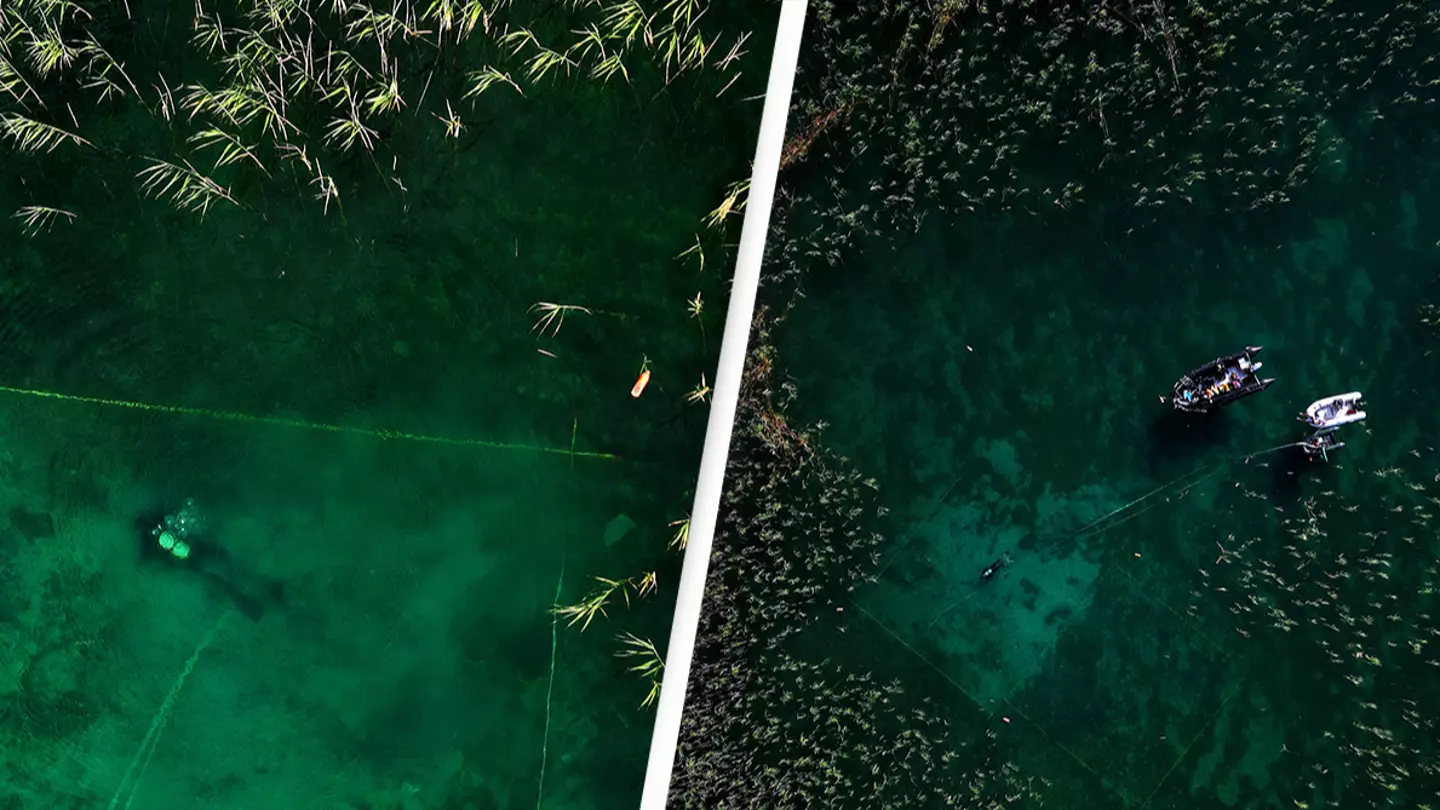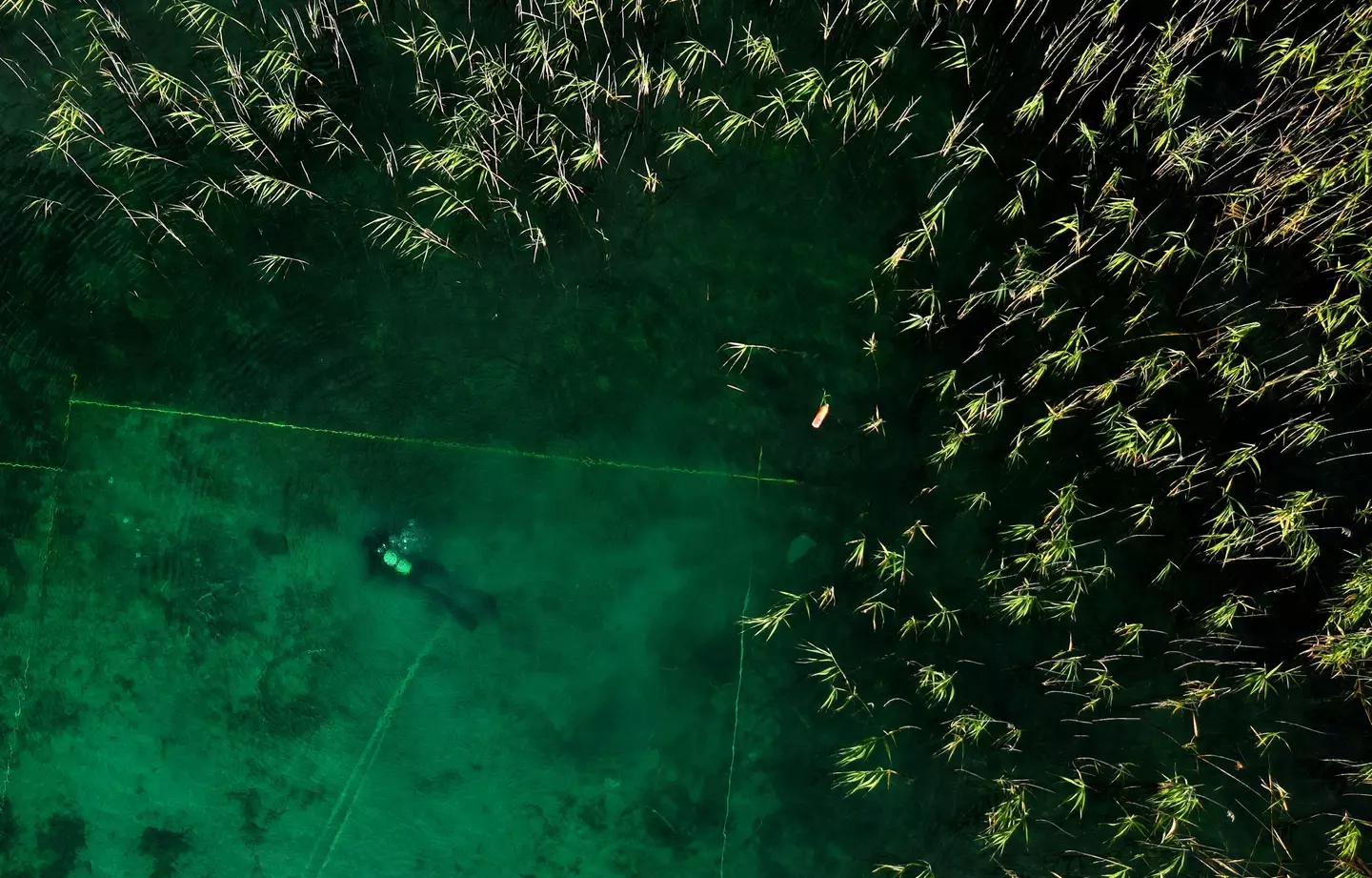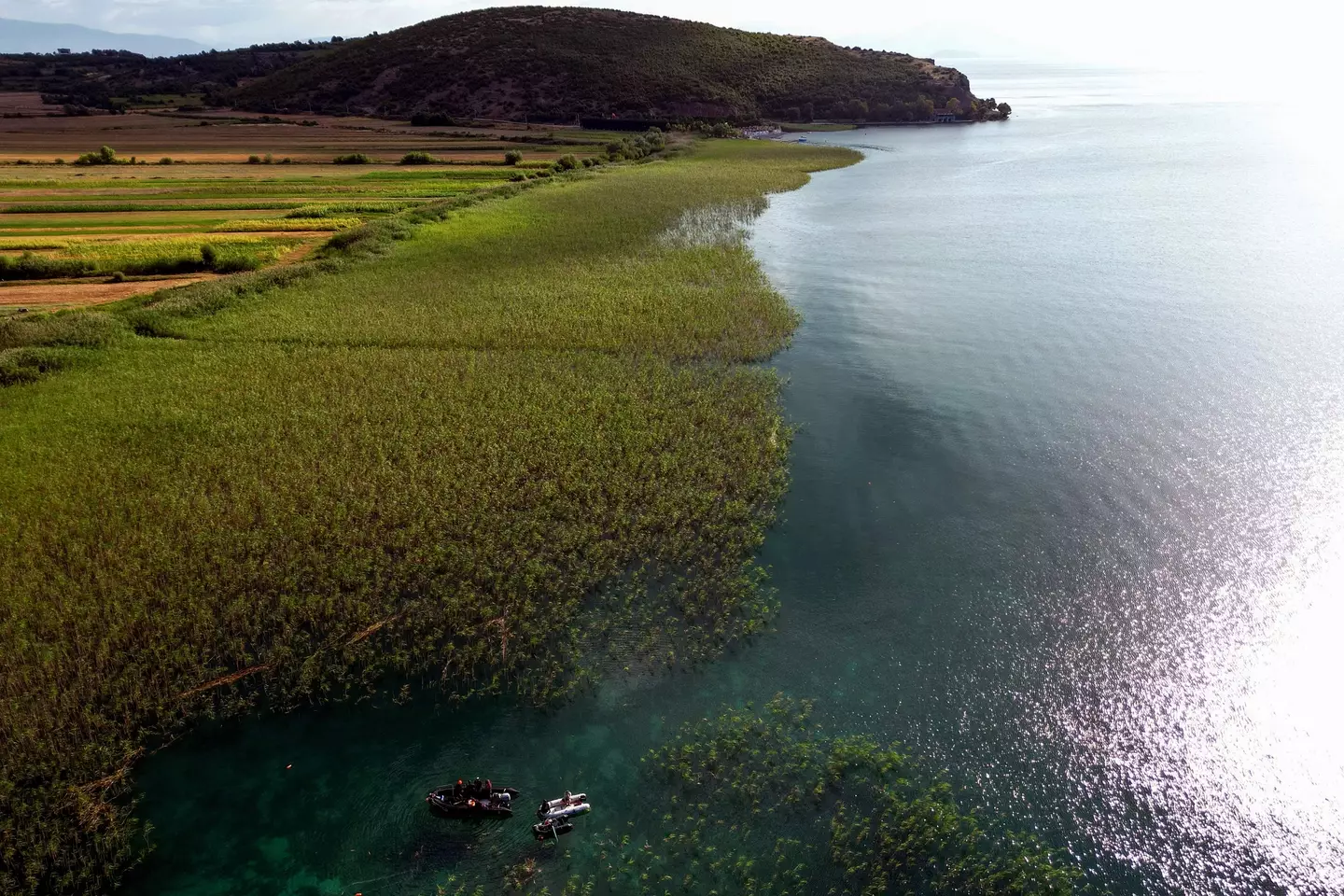
Researchers have been left scratching their heads after discovering spikes used to defend one of Europes oldest villages from an unknown threat.
Earlier this year, researchers discovered the oldest lakeside settlement found in Europe.
The community was found in Albania beneath Lake Ohrid, the 'Pearl of the Balkans' and was estimated to be 8,000 years old.
Advert
"It is several hundred years older than previously known lake-dwelling sites in the Mediterranean and Alpine regions," Professor Albert Hafner from the University of Bern told AFP.
"To our knowledge, it is the oldest in Europe."
But while this find is impressive, researchers quickly came up with more questions about the village.

Namely, why was it built on stilts to sit above the surface of the lake and why was it surrounded by spikes.
Advert
Not just a few spikes, researchers have estimated it was likely surrounded by 100,000 spikes. Each of these spikes were driven into the bottom of the lake and used as defensive barricades.
Researchers have estimated the village likely homed 200-500 people, so this feat was likely no easy task.
"To protect themselves in this way, they had to cut down a forest," said Hafner.
It is also not clear why the small village felt it necessary to build such extensive fortifications to defend themselves.
Advert
"Building their village on stilts was a complex task, very complicated, very difficult, and it's important to understand why these people made this choice," said Adrian Anastasi from the Albanian Institute of Archaeology.

The lake itself is considered one of the oldest in the world and has been around for more than a million years.
Professional divers, researchers and archeologists have to take precautions to ensure they do not damage the prehistoric site.
Advert
“In order to understand the structure of this prehistoric site without damaging it, we are conducting very meticulous research, moving very slowly and very carefully,” Anastasi added.
Hafner also reiterated the importance of the site as analysis of the area can help provide insights into climactic and environmental conditions at the time.
"These are key prehistoric sites that are of interest not only to the region but to the whole of southwest Europe,” he added.
Researchers working on the site have already found various ‘seeds, plants, and the bones of wild and domesticated animals’.
Advert
However, it is believed it will take another two decades to fully understand the region and come to final conclusion about the community.
Topics: Science, World News